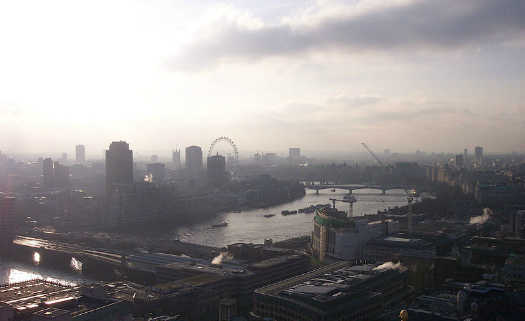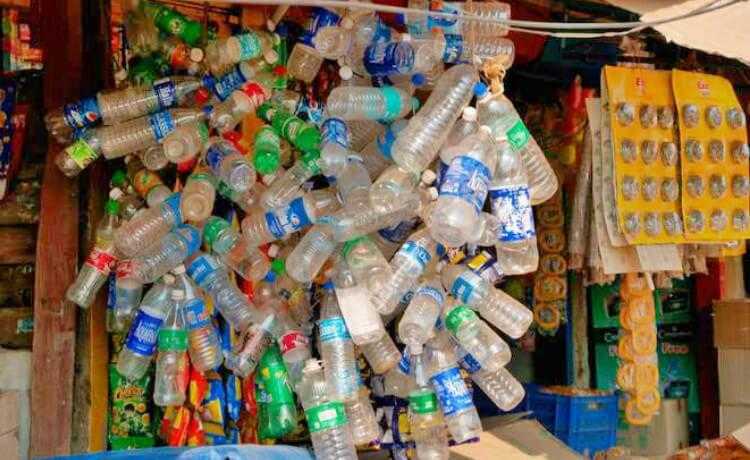What is land use?
Land use process brings consequences for global warming and biodiversity

Freepik image
When we talk about land use, we are referring to the form of land use, that is, how this land is being used. Examples of land use are: urban areas, pastures, forests and mining sites. Until 1970, technology only allowed interpretations of land cover to be made. It was only in 1971, when the National Space Activities Commission (CNAE) was transformed into the National Institute for Space Research (INPE), that the necessary conditions were obtained to advance knowledge about the real condition of the country (in terms of use and land occupation ).
Increasingly, the demand for studies in this area has increased, resulting in information about changes in land use that allow us to verify the interference of human activity on various natural environments. In 1979, Law No. 6766 was approved at the federal level, which provides for the subdivision of urban land and other measures. Federal law determines that each state and municipality can establish its own land use and occupation law, according to regional and local peculiarities.
Overall, the science of land use change aims to understand the evolution of interactions between human systems, ecosystems, the atmosphere and other Earth systems by analyzing the use that humans make of the land.
The study and mapping of land use is important mainly for territorial planning, as it determines the capacity to use the space. These maps are generally elaborated through the analysis and interpretation of images captured by satellites, which are worked on in different software, with the help of a tool called geoprocessing. The land use pattern is constantly modified by human actions, and these maps allow us to visualize the big picture of these changes over the years.
Monitoring land use and land use changes is also important for us to better quantify, predict, mediate, and adapt to global climate change, biodiversity loss, and other global and local consequences caused by changes in use and land cover.
Climate changes
Geoprocessing applied to the production of land use maps is also a useful tool in monitoring illegal deforestation.
The United Nations Framework Convention on Climate Change, in its official documents, divides the sources of emission and removal of greenhouse gases (GHGs) into sectors. One of these sectors, called “changes in land use and forests”, includes deforestation and fire as the cause of emissions and removals resulting from variations in the amount of carbon present in vegetation and soil biomass.
This is due to the fact that, according to the carbon cycle, converting native vegetation cover to agricultural areas or pastures results in CO2 emissions, while the growth and development of vegetation in managed areas removes carbon dioxide from the atmosphere.
The deforestation of the Amazon that has taken place over the last 30 years has placed Brazil among the five largest GHG emitters in the world. Despite this, the percentage of total GHGs emitted in Brazil due to changes in land use has fallen since 2005 thanks to the drop in the pace of deforestation in the Amazon.
The scientific literature has extensively researched how changes in land use can affect climate change. Taking the opposite path, a study by the Institute for Applied Economic Research (IPEA) sought to assess the effects of climate change on land use patterns. According to the study, regions with low temperatures may be positively affected by global warming, which will tend to create more favorable climate conditions for agricultural practices, increasing the productivity of this sector. This process may then lead to the advance of crop areas and the transformation of forests into agricultural areas, accelerating deforestation.
Conversely, hot climate regions will have their temperatures elevated to levels of intolerance on the part of agricultural crops, causing a drop in productivity, which will imply changes in the productive structure and in the pattern of land use.
Water
Once again, terrestrial and aquatic systems have been shown to be closely related. Ballester, one of the members of the FAPESP (Research Support Foundation of the State of São Paulo) program for Research on Global Climate Change, claims that the cultivation of sugarcane can cause various environmental impacts. One of these impacts is caused by the use of vinasse (from the refining of alcohol) as a fertilizer for the crop. Vinasse, which is rich in nitrogen, can end up leaching into waterways, increasing the supply of this nutrient in the aquatic environment and favoring algae growth, which causes eutrophication.
Another problem related to sugarcane cultivation is the use of water for the production of alcohol, in which 1,400 liters of water are needed to produce only one liter of fuel alcohol from sugarcane. In addition, the soot generated from burning sugarcane during harvesting can be deposited on the ground or in water bodies, altering the natural carbon cycling of these ecosystems.
Regarding the type of vegetation around water bodies, Ballester also states that “when vegetation is removed from the edge of a river, more light and materials enter the water body, which makes the water have less oxygen and modify local conditions. This affects the biological diversity of the ecosystem”.
Overall, we can say that land use changes are strongly related to the biodiversity of terrestrial and aquatic ecosystems, and that global warming can be as much a consequence of these changes as a cause. In any case, it is already known that any change in natural environmental patterns that sustain life as we know it can interfere with an entire system. With the land it is no different. For example, we know that population growth is accompanied by an increased demand for food and other resources, which leads us to change the way we use land, often causing forest areas to become pastures or agricultural areas. It remains to be seen how much of this demand is really needed.
Some scholars claim that the world's total food production is enough to supply three times the planet's population! In this way, we realize that we also influence land use. By wasting food, we are contributing to the increase in demand for agricultural areas, as we are acquiring food products that are more than enough for our families, and a large part of them will end up in the garbage. Not to mention the problems arising from other stages, such as transporting food.
On our website we have several articles with tips on how to avoid food waste, and you can access them by clicking on the links below!










